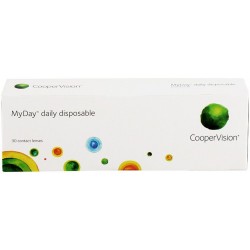Which Ophthalmic Examinations Should Be Performed Regularly?

Regular ophthalmic examinations are important for maintaining eye health and detecting early signs of eye diseases.
The American Optometric Association recommends that adults have a comprehensive eye exam at least once every two years, and more frequently if you have certain conditions such as diabetes or a family history of eye disease. Children should also take part of these exams.
During the eye exam, an optometrist or ophthalmologist will typically perform tests to check your visual acuity, eye pressure, peripheral vision, eye muscle function, and the health of the retina and optic nerve.
Other tests, such as a dilated exam or a visual field test, may also be recommended, depending on your individual needs and risk factors. While the doctor will recommend contact lenses or wearing glasses, this will depend on the test carried out.
This article will delve deeper into this topic and uncover what eye exams you should be taking more frequently.
With that said, let’s get started.
What is the ophthalmic examination?

An ophthalmic examination is a comprehensive evaluation of the eyes and vision that is performed by an optometrist or ophthalmologist. The exam typically includes a range of tests and procedures that are designed to assess the visual acuity, eye muscle function, health of the retina and optic nerve.
During an ophthalmic examination, the doctor will perform a series of tests to evaluate various aspects of vision. Tests that may be included in an ophthalmic exam include a dilated eye exam, which involves the use of drops to widen the pupils and allow for a more thorough evaluation of the retina and optic nerve.
Overall, an ophthalmic examination is an essential tool for maintaining eye health and detecting any early signs of disease. The frequency of the exam may vary depending on individual risk factors, but it is typically recommended that adults have a comprehensive eye exam at least once every two years.
Why are eye tests so important?
Eye tests are important for several reasons. First and foremost, an eye examination helps to catch any potential issues early on, when they are more treatable. Many common eye conditions, such as glaucoma, cataracts, and macular degeneration, may not show symptoms until they are advanced.
Secondly, an eye examination can also help to identify other health problems beyond just eye conditions. For example, in some cases, a doctor may sense changes in the eyes, which can indicate underlying health issues such as high blood pressure or diabetes-related damage.
Finally, eye tests can help to ensure that patients are seeing their best even at the age of 40.
Detecting Medical Conditions and Diseases

Eye examinations can be useful in detecting a variety of medical conditions and diseases beyond just issues related to the eyes themselves. Here are some examples of medical conditions that can be detected through a routine eye examination:
Diabetes
Medical history or not, Diabetes can cause damage to the blood vessels in the retina, leading to a condition called diabetic retinopathy. Regular eye examinations can help detect early signs of this condition, which can help prevent vision loss and promote the health of your eyes.
Multiple sclerosis
Multiple sclerosis (MS) is a neurological condition that affects the brain and spinal cord. Changes in the optic nerve and other parts of the eye can be an early sign of MS.
Tumors
Tumors in the eye or surrounding structures can sometimes be detected through routine eye examinations.
Overall, while eye examinations are primarily focused on assessing eye health and vision, they can also provide important insights into other aspects of overall health. This is why it is important to have regular eye exams as recommended by your healthcare provider.
How the Test is Performed

Patients need to look at their distinct conditions because that’s what determines what happens at the test. However, the following are the general steps by which the exam is carried out.
1. Visual acuity test: The healthcare provider will usually ask the patient to read an eye chart while standing at a certain distance. The chart typically contains letters or numbers of gradually decreasing size to test how well the patient can see.
2. Slit-lamp examination: This involves the use of a microscope with a bright light to examine the front of the eye, including the cornea, lens, and iris.
3. Dilated eye examination: Eye drops are used to dilate (widen) the pupil, allowing the provider to examine the retina and optic nerve at the back of the eye.
4. Intraocular pressure (IOP) test: This involves using an instrument called a tonometer to measure the pressure of the fluid within the eye.
5. Visual field test: The patient is usually asked to look straight ahead while a series of lights are flashed at various points around their field of vision. This can help to detect any blind spots or other issues with peripheral vision.
7. Additional tests: Depending on the patient’s individual needs, other tests such as a color vision test or a fundus photography exam (to take pictures of the retina) may be performed.
Overall, the specific tests and procedures included in an ophthalmic exam may vary depending on the provider and the needs of the patient, but the goal is always to assess the health of the eyes and vision and detect any potential issues as early as possible.
How often should you have an eye test?

The frequency of eye tests depends on various factors such as age, medical history, and family history of eye diseases.
In addition, the American Academy of Ophthalmology recommends that adults get a complete eye examination at age 40. This is when early signs of disease or changes in vision may appear. It is important to find eye diseases early.
Early treatment can help preserve your vision. If you have diabetes or have a family history of eye disease, talk with your ophthalmologist about how often your eyes should be examined. For most people, it’s advisable to have an eye test every two years, but it’s best to attend earlier if any eye problems occur or if advised by your optometrist.
Eye tests according to your age
Eye tests are important for maintaining good vision and eye health. The frequency of eye tests depends on your age, risk factors, and symptoms. Here are some general guidelines:
- Children and teens: They should have their vision screened at various stages from birth to 18 years old. These screenings can help detect any problems that may need a comprehensive eye exam by an ophthalmologist or optometrist.
- Adults under 40: They should have a complete eye exam once in their 20s and twice in their 30s, unless they have eye symptoms, wear contact lenses, or have a higher risk of eye disease.
- Adults over the age of 40: They should have a baseline eye exam at age 40, and then follow the schedule recommended by their doctor based on their eye condition and risk factors. Generally, adults over 40 should have their eyes checked every 1 to 4 years, and adults over 65 should have their eyes checked every 1 to 2 years.
- People with diabetes: They should have their first eye exam soon after diagnosis, and then have yearly eye exams to monitor for diabetic retinopathy and other complications.
What to expect after your eye exams

1. Needing to wear glasses or contact lenses: If the eye exam reveals that the patient has a refractive error such as nearsightedness, farsightedness, or astigmatism, the provider may prescribe glasses or contact lenses. Some patients may need time to adjust to wearing glasses or contacts, and may experience some discomfort or difficulty with depth perception at first.
2. Dilated pupils: If the patient has a dilated eye exam, they may experience temporary blurred vision or difficulty focusing on objects up close, and may need someone to drive them home from the appointment.
3. Sensitivity to light: After a dilated eye exam, patients may be more sensitive to bright light for a few hours, and may need to wear sunglasses or avoid harsh lighting.
Check our contact lenses offer:

Ultra 6 Contact Lenses
Monthly ULTRA contact lenses for Presbyopia are produced by Bausch+Lomb. They give 16 hours of convenience ensured by Mo...

MyDay Contact 30 Lenses
MyDay daily lenses are based on the silicone-hydrogel material Stenfilcon A, which ensures that there's adequate oxygen perme...

Clariti Multifocal 6 Contact Lenses
Clariti Multifocal 6 lenses are progressive monthly lenses for daily wear. The glass is designed by CooperVision. You can us...

Clariti Elite 3 Contact Lenses
Clariti Elite lenses are monthly contact lenses from CooperVision intended for the correction of myopia and hyperopia and oth...






